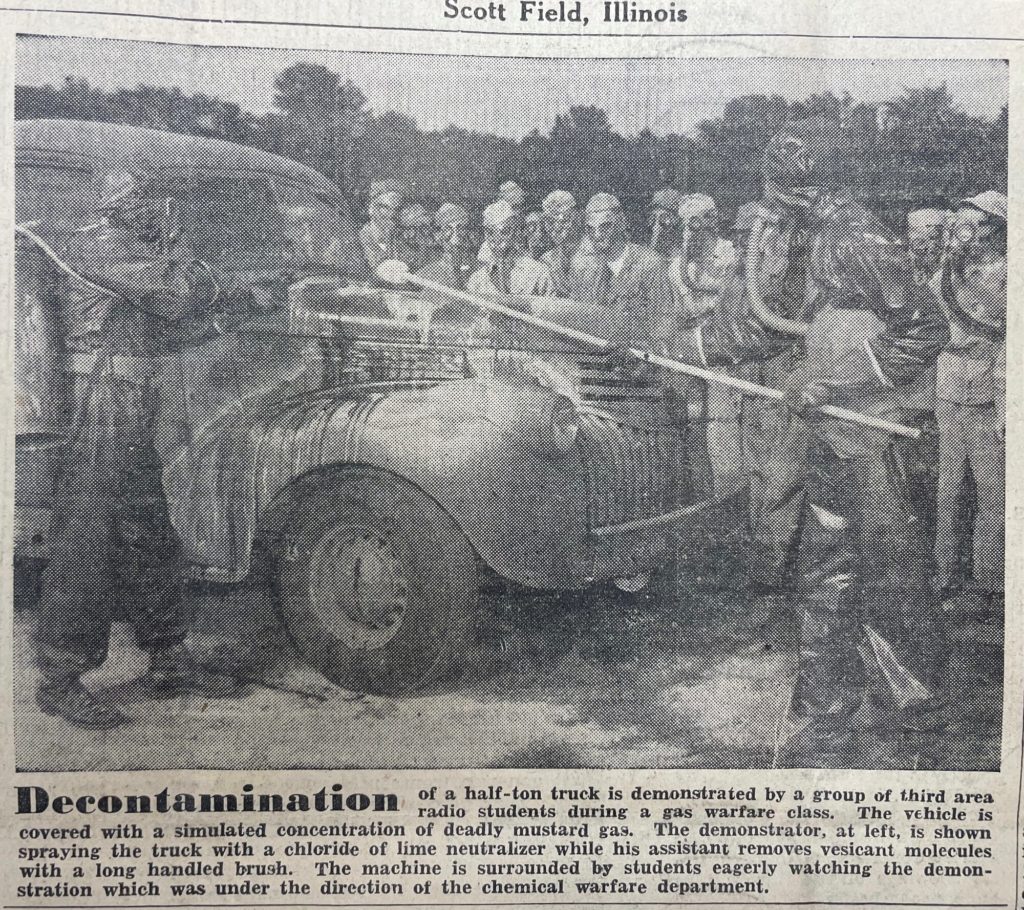Scott Air Force Base has its roots in being prepared to fly, fight, and win our Nation’s wars. Our current efforts to sharpen expeditionary skills stems from the 1917 establishment of Scott Field to train Airmen for World War I. When global war, again, reared its ugly head, Scott Field doubled down on its commitment to the United States. As in WWI, the Second World War saw Scott Field shoulder a heavy burden to provide combat-ready Airmen for the war effort.
While the main curricula focused on basic training and radio operations, there were numerous efforts to build combat readiness skills and fighting spirit, such as several obstacle courses on post for troops to build strength, endurance, and mental fortitude. The base newspaper, on Nov. 4, 1942, blared “WAGE WAR ON SOFTIES” as its headline, with an accompanying article stating that Scott troops were ordered to “get tough” and that rain or snow was no excuse to avoid trainings such as physical fitness.
Some fieldcraft was integrated into the radio school curriculum, with helmeted radio students learning to operate equipment in field conditions under the guidance of their noncommissioned officer instructors. More advanced training integrated combat scenarios for the students to communicate under wartime conditions.
In 1943, Scott Field opened two small arms ranges so that weapons training no longer meant costly trips to Camp Lincoln in Springfield. These lower costs allowed more “Scottsmen”, as they were then known, to qualify with M-1911 pistols and M-1 carbines before shipping out to Europe or the Pacific.
One area of serious focus was the base’s chemical warfare training program. This training was a frequent occurrence, and not just in the training areas: base newspaper articles of the time show that the Post Exchange was even considered “in play”, with employees and customers alike conducting transactions while wearing gas masks. Other sights that may be familiar to us today are the decontamination of vehicles of chemical agents.
Scott even had a gas-focused obstacle course built, with Airmen navigating obstacles designed after Japanese fighting positions (based on reports sent back from the Pacific Theater) in full chemical gear. This course was the first of its kind in the Army Air Forces, an early indicator of Scott’s innovative culture.
One group who took their charge seriously were the student “Commandos” or “Radio Raiders” of the 370th Technical School Squadron. These Airmen took it upon themselves to undergo rigorous combat training outside of the radio school program, consisting of tougher obstacles, physical fitness, field skills such as camouflage, and hand-to-hand combat. They were frequently showcased at parades and events open to the public for demonstrations, such as the base open house of December 1943 that drew 2,500 visitors.
With America “all in” on defeating the Axis Powers, Scott Field had an undeniable focus during the 1940s: Every Scottsman was ready, willing, and able to fight. This mindset persists in Team Scott today, in an uncertain world of increasing complexity.





